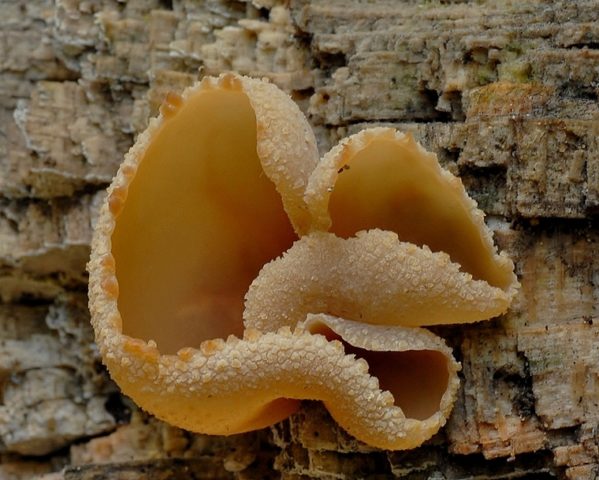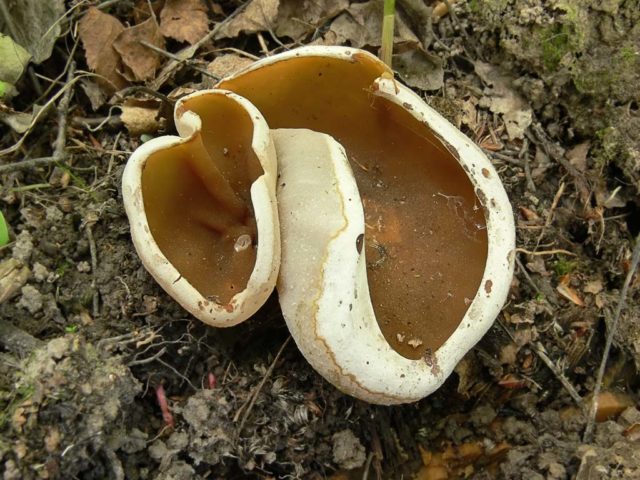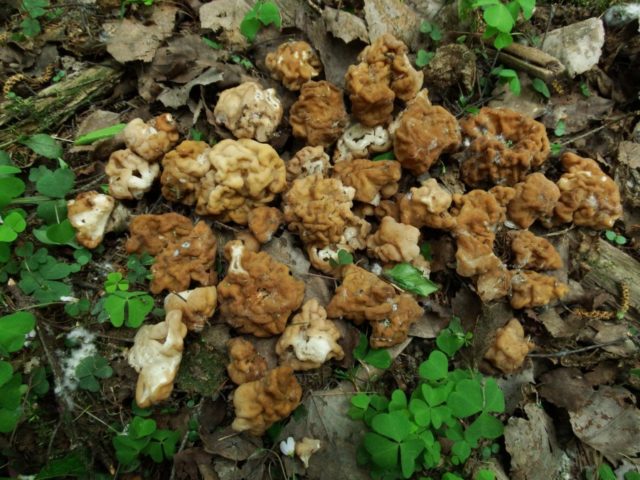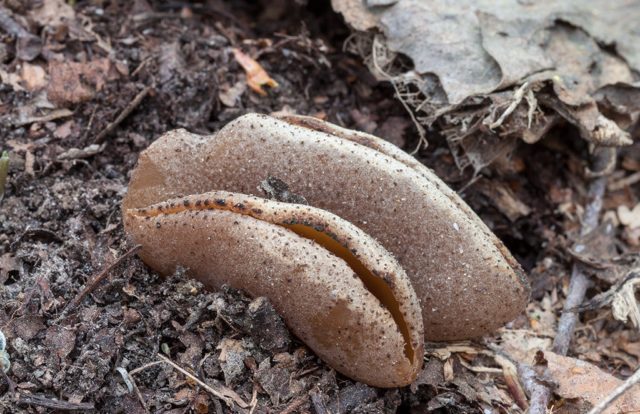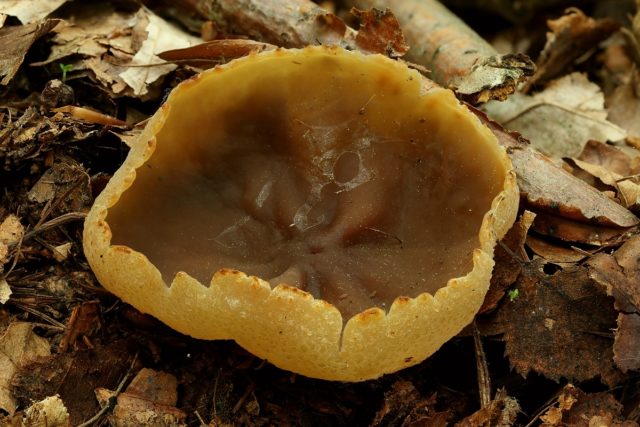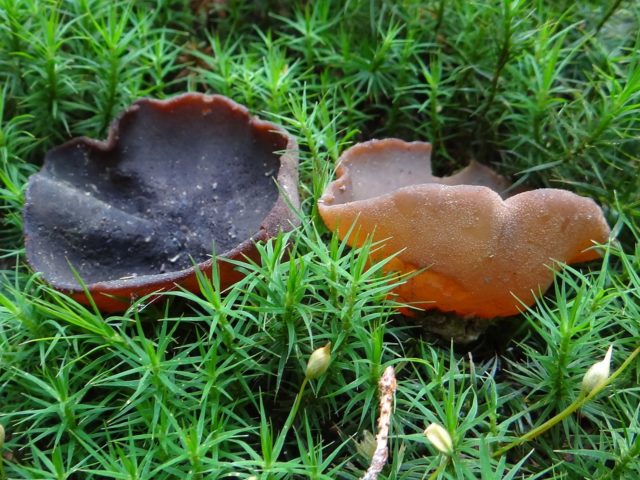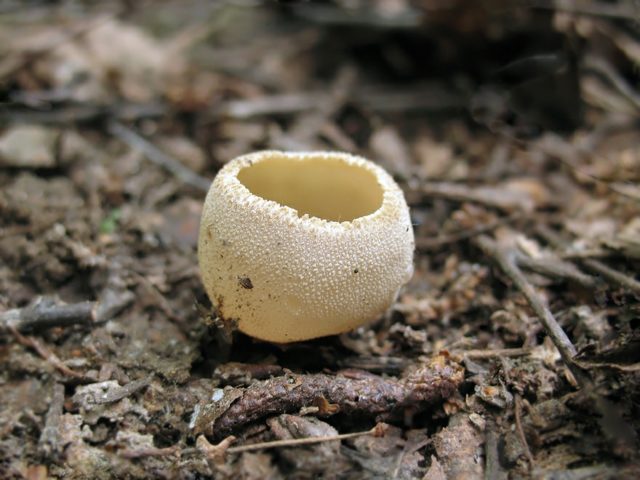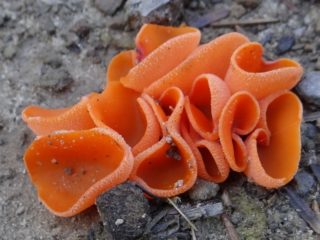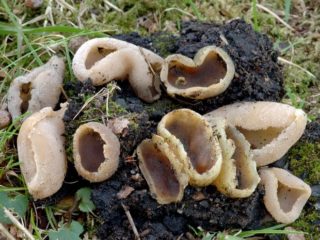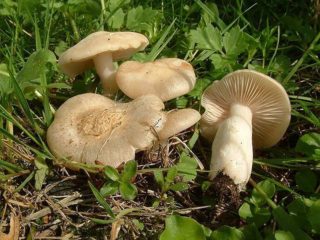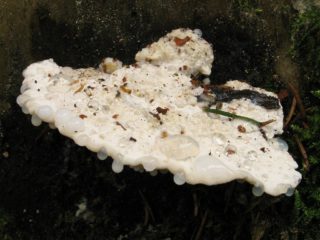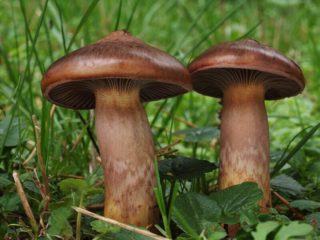Content
Pecitsa varia (Peziza varia) is an interesting lamellar mushroom that belongs to the genus and family of Pecitsia. Belongs to the class of discomycetes, marsupials and is a relative of stitches and morels. Previously, it was distinguished by mycologists as a separate species. Recent studies at the molecular level have shown that the species considered to be separate species can be attributed to one large genus.
What does a changeable petsitsa look like?
Fruit bodies are bowl-shaped, do not have the usual caps. Young petsitsa changeable takes the form of a spherical cognac glass slightly open on top. As it grows, the edges straighten, taking on a funnel-shaped, and then a saucer shape with a pronounced depression in the place of growth and sides curled inward.
The edges are uneven, wavy, slightly ragged, jagged. There are chaotically spaced folds. The surface is smooth, brilliantly moist, like a varnish. The color is even, without differences, the color of coffee with milk, slightly greenish or brown shades. It can be creamy and golden-red. The outer surface is dull, with tiny hairs or scales, light, white-gray or yellowish. It can grow up to 15 cm. Its usual size is 4-8 cm.
The leg is missing. Some specimens have a small pseudopod. Spore powder is pure white. The flesh is gray or brown in color, with five to seven distinct layers.
Where and how it grows
The changeable pecitsa loves rotten, semi-rotten wood, soil saturated with forest decay, or old fires. The mycelium begins to bear fruit in the spring, when the weather is rather warm and the snow melts, it even got the name of the snowdrop mushroom. They continue to grow until the October frosts, and in the southern regions up to persistent frosts.
It is found quite often, in small closely planted groups, in forests, gardens and parks. Distributed in the Krasnodar Territory and throughout Russia. It can also be seen throughout Europe and North America.
Is the mushroom edible or not
There are no exact data on the toxicity or edibility of this type of mushroom. The fruit body has an unsightly appearance, a thin rubbery flesh that is tasteless and devoid of any odor. The culinary value tends to zero, which is why the mushroom is considered inedible.
Doubles and their differences
Pecitsa changeable is extremely similar to the fruiting bodies of varieties of its own family. Their differences are minimal and almost invisible to the naked eye. Fortunately, no poisonous counterparts were found in the fungus.
Pecica ampliata (widened). Inedible. Does not contain toxic substances. As it grows, it acquires a pie-shaped, diagonally elongated shape and, as if smoked, brown-black edges. The color of the outer side is brownish-sandy.
Pecitsa Arvernensis (Auverne). Non-toxic, inedible due to low nutritional value. Has a darker color of the surface and pulp, the edges are smoother. A rudimentary pseudopod is often seen. The pulp is brittle, without pronounced layers.
Pecitsa repanda (blossoming). It is classified as an inedible mushroom due to its thin, tasteless pulp. The edges of the bowl are not wrapped, they are more elongated, for which they received the nickname "donkey ears".
Pecica micropus (small-legged). Inedible due to low nutritional value. The pulp is brittle, slightly layered. Its main difference from the changeable petsitsa is a pronounced pseudopod and small size, 1.5-6 cm in diameter.
Pecica Badia (brown). Non-poisonous, inedible. Fruit bodies have a rich brown and dark chocolate color, grow up to 16-18 cm.
Pecitsa changeable also bears great resemblance to the fruiting bodies of the genus Tarzetta (barrel-shaped, bowl-shaped, and others). They are distinguished by a pronounced pseudopod, light coloration of the outer side and miniature size, from 10 to 30 mm. Inedible due to their small size and low nutritional value.
Conclusion
Pecitsa changeable grows in forests on fallen trees and old stumps. Occurs in gardens, parks and fields, on semi-rotted sawdust, in dead woods. Feels great on soil rich in woody humus. Has an original bowl shape. Its entire inner surface is a spore-bearing layer, the outer is sterile. The fungus can be found throughout the Northern Hemisphere in small groups from May to October. It has no nutritional value due to its thin, tasteless pulp, there is no exact data on the toxins or poisons it contains.
